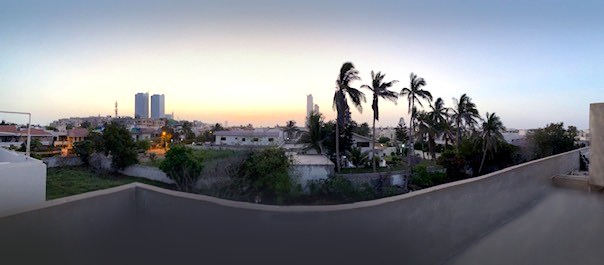Microinsurance is a significant tool for emerging economies. It is a crucial financial tool for low-income individuals, offering them protection against multiple risks, but at affordable premiums.
In a country like Pakistan, where a large section of the population grapples with economic uncertainty, microinsurance plays a pivotal role in providing financial security and peace of mind to those who need it the most.
The Importance of Microinsurance in Pakistan

Pakistan has a population of over 240 million, and a significant portion of its people live below the poverty line. According to the World Bank, nearly 24% of the population lives on less than $1.90 or PKR 520 a day.
Due to financial constraints, traditional insurance policies are often inaccessible to these low-income groups, exposing them to common risks like health, accidents, natural disasters, and loss of livelihood.
Microinsurance plays a crucial role in providing financial security to low-income families. By offering a range of affordable insurance products tailored to their specific needs, microinsurance helps these families protect themselves against various risks.
These products cover life, health, agriculture, and asset protection, empowering people to manage unforeseen challenges and recover more easily from financial setbacks.
Current Landscape of Microinsurance in Pakistan
Pakistan’s microinsurance sector is experiencing slow but steady growth. The Securities and Exchange Commission of Pakistan (SECP) has established a well-structured and supportive framework for microinsurance providers within the country’s insurance industry.
This has paved the way for local insurance companies and microfinance institutions to make substantial progress in offering accessible insurance products to the underserved population.
1. Life and Health Microinsurance
In Pakistan, life and health microinsurance are necessary to protect low-income households. Life insurance policies provide financial support to the policyholder’s family in the event of their death, ensuring that they have a safety net during a difficult time.
On the other hand, health microinsurance is designed to cover medical expenses, including hospitalizations and surgeries. Microinsurance products offer peace of mind and financial security to those who may otherwise struggle to afford such essential services.
2. Agriculture Microinsurance

Agriculture is crucial to Pakistan’s economy, but it faces risks like droughts, floods, and market volatility. Microinsurance helps farmers by providing coverage for crop failures and livestock losses.
The adoption of agricultural microinsurance is still in its early stages, but the government and NGOs are actively promoting it. Key players like the National Insurance Company Limited (NICL) and Zarai Taraqiati Bank Limited (ZTBL) offer crop insurance schemes to enhance the farming community’s resilience.
3. Asset Microinsurance
Asset microinsurance covers small-scale assets, such as livestock, vehicles, or business equipment, that are crucial for the livelihoods of low-income families. Many individuals in rural Pakistan depend on livestock or small businesses to make a living, and the loss of such assets can be devastating.
Asset microinsurance offers financial compensation for loss or damage, enabling families to recover and continue their economic activities.
Key Players in Pakistan’s Microinsurance Sector
Several players provide microinsurance in Pakistan, ranging from local insurance companies to microfinance institutions and NGOs.
Many microfinance institutions, such as the Kashf Foundation and Khushhali Microfinance Bank, offer bundled microinsurance with their loan products, serving millions of clients with life, health, and agriculture insurance coverage.
Telecom Providers: As mobile technology becomes more prevalent, telecom companies like Jazz and Telenor Pakistan are teaming up with insurance firms to provide mobile-based microinsurance products.
These services enable customers to easily sign up for affordable insurance policies using their mobile phones, thus making insurance more accessible to rural populations.
Challenges in Microinsurance in Pakistan
While microinsurance holds great promise, the industry faces several challenges in Pakistan that must be addressed to reach its full potential.
1. Low Awareness and Trust
Most Pakistanis know little about insurance or its benefits, making it difficult for microinsurance to become widely used. Also, people in rural areas don’t trust financial institutions, as formal financial services are limited.
Solution: Microinsurance uptake can be achieved through educational campaigns and engaging trusted community leaders. The government, NGOs, and insurance providers must collaborate to educate people about the significance of insurance and how it can protect their livelihoods.
2. Affordability and Product Customization
While microinsurance is designed to be affordable, even its small premiums can be a financial burden for many low-income families. Additionally, many insurance products are not well-tailored to the specific needs of the population they aim to serve.
Solution: Insurers should develop highly customizable and flexible products regarding payment options. For instance, offering microinsurance on a pay-as-you-go basis could make it more accessible for people with fluctuating incomes.
3. Distribution Challenges
Reaching Pakistan’s rural and remote areas poses a significant challenge for microinsurance providers. Traditional distribution channels are often ineffective, and many people in rural areas do not have access to formal banking systems.
Solution: Leveraging mobile technology and digital platforms can help overcome these distribution challenges. Telecom providers can offer mobile-based microinsurance to extend insurance products’ reach to the most underserved areas.
4. Regulatory and Policy Barriers
The regulatory structure for microinsurance in Pakistan is still under development. While the SECP has made efforts to promote microinsurance, more must be done to create a conducive regulatory environment that encourages innovation and competition in the market.
Solution: The SECP and government should continue to refine regulations that make it easier for insurance providers to enter the microinsurance space.
The Future of Microinsurance in Pakistan
Despite the challenges, the future of microinsurance in Pakistan looks promising. As the government, financial institutions, and telecom companies continue to collaborate, we can expect to see innovative solutions that address the specific needs of Pakistan’s low-income population.
Increased adoption of mobile-based insurance products and greater regulatory support will likely drive the sector’s growth. Microinsurance has the potential to protect individuals and families from financial shocks and contribute to broader economic development by creating a more secure and inclusive financial system.
Conclusion
Microinsurance in Pakistan is at a pivotal stage. Despite the progress made in expanding access to insurance for low-income families, significant challenges remain.
Addressing these challenges demands joint efforts from all stakeholders, including the government, financial institutions, telecom companies, and NGOs.
With the right support and innovation, microinsurance can become a powerful instrument for improving the financial security of Pakistan’s most vulnerable populations.

Sadia Zaheer holds a Masters in Business Administration from IBA, Karachi. After working in several financial institutions in Client Management, Corporate Lending, Islamic Banking and Product Management she jumped careers to pursue a career in writing.
She is a Finance, Business and HR Development writer with four years of experience. She reads a lot and takes care of her multiple cats to remain calm.



